As the ultimate way to get a PC that’s uniquely tailored to your exact preferences, PC building is all about choice. From picking parts to optimizing your hardware in BIOS, you’ll have many choices to make. But a few key decisions early in the process have wide-ranging impacts. After settling on your answers to these questions, you’ll be able to dig right in to selecting parts, perhaps using a service like Newegg’s Combo Builder to get rolling quickly and confidently.
This article is part of our “Back to Basics” series designed to help PC building newcomers make informed decisions about component purchases and assemble their new PC with confidence. Click here to browse the entire collection of posts.
Pick your graphics card power level
Today’s graphics cards are almost like miniature computers unto themselves. They use their own processing resources, memory, and cooling hardware to perform specialized functions like rendering game worlds, applying visual FX to videos, or running an AI chatbot.
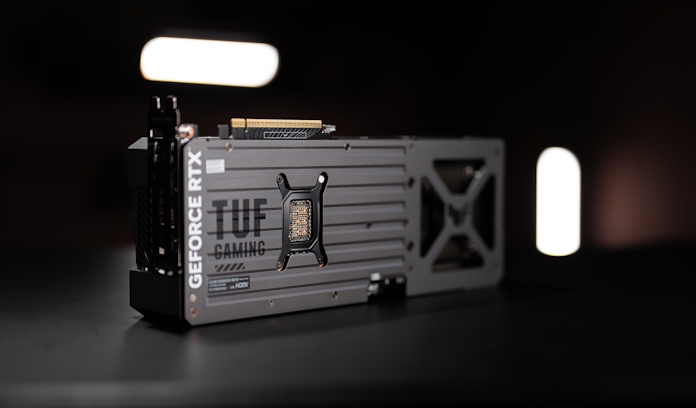
All that hardware means today’s top-end graphics cards can get pretty big. Take the TUF Gaming GeForce RTX 5080, for example. Between its sizable heatsink, diecast shroud, and aluminum backplate, it’s 348mm long, so it needs a case with some elbow room. It’s not particularly difficult to find such a case, to be clear. There are plenty of ASUS PC cases that can accommodate any NVIDIA 50 Series graphics card on the market. But if you’re building a PC that will include a top-tier graphics card, you should have its size in mind before you get your heart set on a case that’s too small.
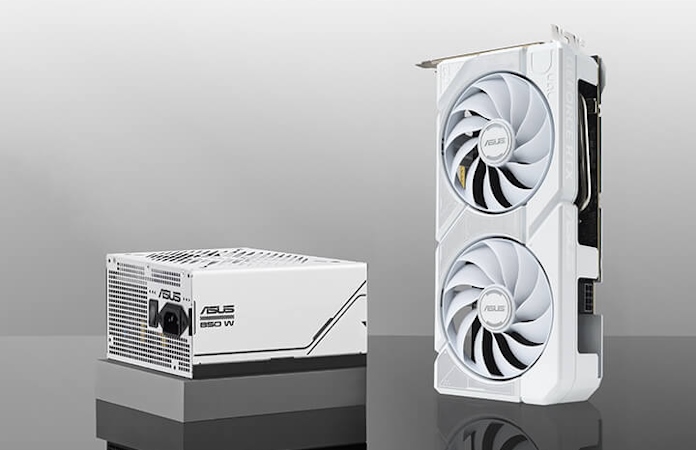
If you intend to grab a mainstream or entry-level graphics card, on the other hand, you’ll have more flexibility. Let’s say you’re looking at the NVIDIA GeForce RTX 5060 Ti. You’ll find three ASUS variants of this card, ranging from a TUF model with a fairly large cooler to an ASUS Dual model with a compact, space-saving dual-fan cooling design. It’s very easy to find a case that’ll fit the Dual card. In fact, you might have to hunt for a while to find a case that’s too small for it.
Select your size
Once you have a rough idea in mind about how much graphics performance you’re looking for in your new PC, you can start making decisions about your PC case. The first big choice with a PC case is deciding on its size.
When we talk about a PC case’s size, we start by referring to its motherboard compatibility. An ATX PC case, for example, is big enough to accommodate a standard-sized ATX motherboard. A microATX case, on the other hand, caps out at microATX motherboards — you won’t be able to fit an ATX or EATX board in such a case. From there, PC cases vary. Some ATX cases are thicker than others, perhaps to accommodate a thicker cable management chamber or a taller CPU tower cooler. Some are extra tall so that it’s a bit easier to fit in a liquid cooling radiator up top. Others trim down their dimensions as much as possible to save some space on your desk.
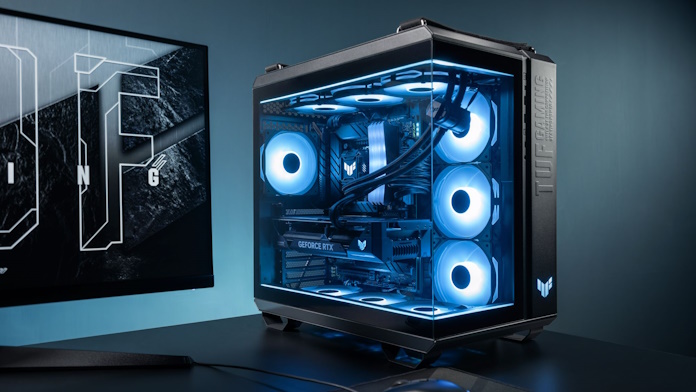
If your desktop has the space and you’re not all that concerned about the size of your PC, you might find it easiest to pick an ATX PC case. It’ll give you the most choice when it comes to selecting your other components. It’s often easier to get great airflow in such cases, and they’re usually more comfortable to work inside, too.
Perhaps you need a more compact PC. MicroATX cases are a solid choice here. You’ll need a smaller microATX motherboard for such a case, but these cases are often still big enough to accommodate standard graphics cards, coolers, and power supplies. If you need such a case, the Prime AP201 is easy to recommend.
Even smaller options are out there. The small-form-factor PC building community is always finding new ways to get potent performance in pint-sized PCs. Such a build requires careful planning to ensure component compatibility, so we don’t usually recommend this approach for your first PC build.
Settle on an aesthetic
Early on in your planning process, it’s helpful to start thinking about the aesthetic that you’re going for. If there’s a particular color or design concept that you want to see across your completed build, you’ll want to have that in mind from the start.
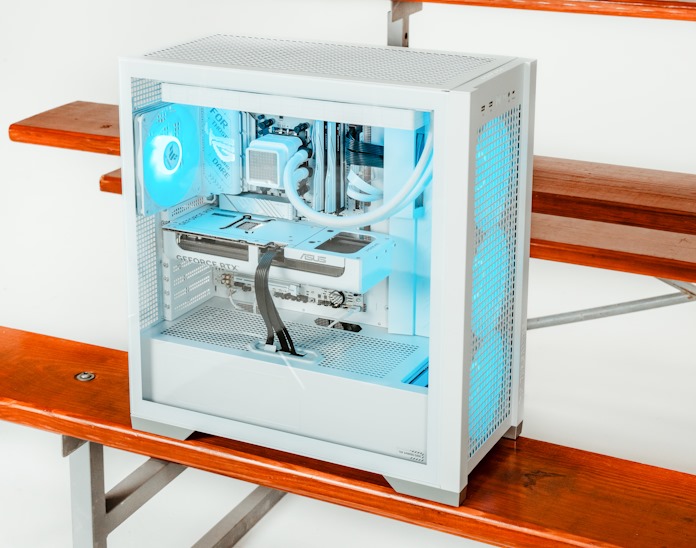
Lots of ASUS PC components, like the affordable ASUS A31 chassis, come in two variants, one white and one black. Even cables for the front I/O panel are color-matched to meet the theme. Settling on a colorway early will make sure that you can pick a motherboard, graphics card, power supply, and memory that coordinate with your build plan.
Perhaps you’re interested in a panoramic PC case that gives you a wide view of your internal components using not just one but two tempered glass panels. That’s helpful to keep in mind from the start, too, as you’ll need to plan for just about every part of your new build being visible to everyone who sees your new PC.
Make a plan for cooling
For the best experience with your new PC, you’ll need a well-planned cooling system. If your PC doesn’t have an optimized airflow pathway, your PC might end up with higher CPU and GPU temperatures. Among other concerns, that can cause your PC case fans to be much noisier than you’d like.
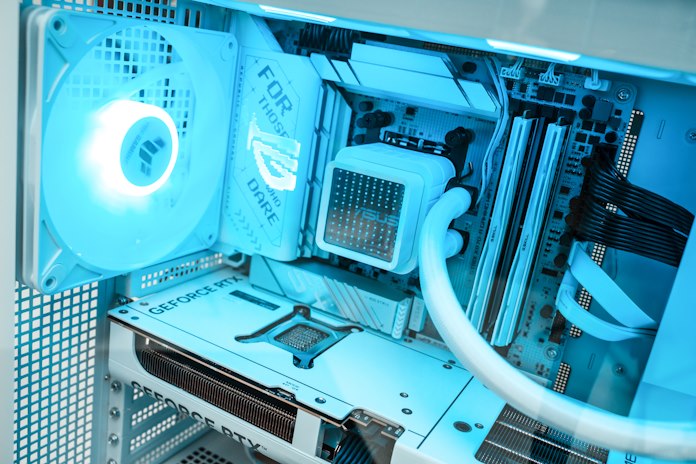
One of the reasons that many builders prefer all-in-one CPU liquid coolers is that they include a radiator and fans. Whether you set these up as part of your case’s air intake or exhaust, they’ll play a central role in defining your PC’s cooling system. If you intend to install such a radiator, you’ll need to ensure that your case is compatible, so check its product page.
Pick a processor
One last decision to make early in your planning process for building a gaming PC. Your CPU choice will affect many of your other component choices, so it’s good to go in with a plan.
CPUs require a specific socket, limiting which motherboards you can select. Top-of-the-line processors can draw copious amounts of power, so you’ll need to select a power supply accordingly, and for long-term reliability you should consider a motherboard with a robust power solution, as well. For convenience, it’s easiest to pick memory that’s validated for the motherboard that you select and offers a one-click memory overclocking profile. Selecting a current-gen CPU potentially provides access to current-gen features like the latest WiFi standard, support for the fastest SSDs, and high-speed USB options, whereas saving some money with a last-gen CPU very well could limit you on these fronts.
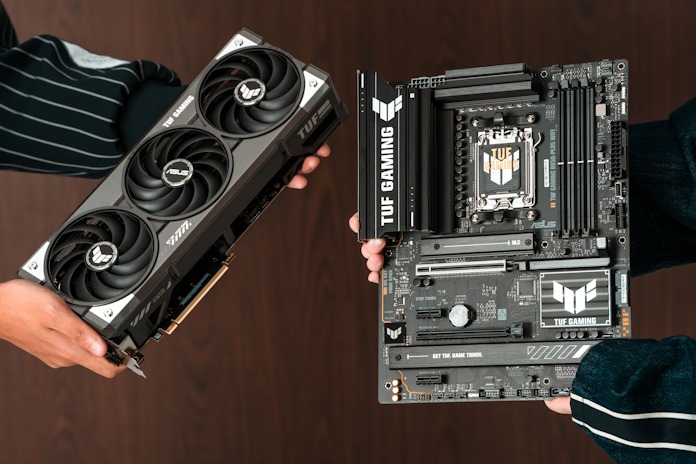
If navigating all those PC-building decisions sounds a little intimidating, don’t panic. There are tools out there that help streamline the process of picking these vital components so that you know you’re getting compatible parts. The Combo Builder over at Newegg is easy to recommend. It’ll walk you through the process of picking a processor, motherboard, memory, storage, case, power supply, and CPU cooler, highlighting available combo savings and promo codes, all while ensuring that your new components will all play together nicely. Whether you’re looking to take some of the stress out of planning your parts list, find the best available discounts, or a bit of both, the Combo Builder is a great starting point.
